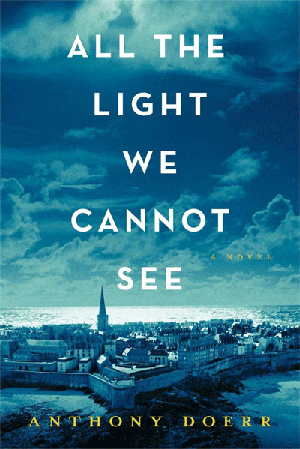

These paragraphs paint a beautiful picture of a blind girl’s confidence that everything will be all right, when readers already have seen enough of the threat of war to know her reassurance is actually saying that everything is far from being all right.
Do you suppose we can find ways to make great writing even better? Let’s try, because our effort will help us improve our own storytelling skills.
Here’s a great paragraph from All the Light We Cannot See by Anthony Doerr:
Marie-Laure tries to lie very still. She can almost hear the machinery of her father’s mind churning inside his skull. “It will be okay,” she whispers. Her hand finds his forearm. “We will stay here awhile and then we will go back to our apartment and the pinecones will be right where we left them and Twenty Thousand Leagues Under the Sea will be on the floor of the key pound where we left it and no one will be in our beds.”
The distant anthem of the sea. The clopping of someone’s boot heels on cobbles far below. She wants very badly for her father to say, Yes, that’s it absolutely, ma chérie, but he says nothing.
Here’s how we might make it better:
Marie-Laure lies motionless. She can almost hear the machinery of her father’s mind whirring. “It will be okay,” she whispers. She moves her hand until she touches his forearm. “We will stay here awhile, and then we will go back to our apartment. The pinecones will be right where we left them. Twenty Thousand Leagues Under the Sea will be on the floor where we left it, and no one will be in our beds.”
The distant anthem of the sea. The clopping of someone’s boot heels on cobbles far below. She wants her father to say, Yes, that’s it absolutely, ma chérie, but he says nothing.
Here’s the reasoning behind some of the changes:
- We often say we try, when the goal and best focus is upon the doing, not the trying. By saying Marie-Laure “tries to lie very still,” we’re suggesting that she’s far from doing it. A stronger picture leaves out “tries,” simply saying, “Marie-Laure lies very still.”
- We need the word “very” very few times, because it doesn’t often add meaning. In this case, maybe “motionless” works better..
- Liquids churn, but machines? Not so much. We need a picture in the form of sounds the blind girl can see. If she likens her father’s thoughts to machinery turning, “whirring” might be better than “churning.”
- “Inside his skull” is obvious. Where else would his brain be? We can leave that phrase out.
- “Her hand finds his forearm” is what we call a “floating body part,” as if her hand has a mind of its own. Instead of “her hand finds his forearm,” we do better with “she moves her hand until she touches his forearm.”
- Next we have a very long dialogue sentence. Five independent clauses are joined with conjunctions and no commas. Dialogue tends to be short sentences—often just fragments. We should at least break the dialogue into three sentences, with commas before the conjunctions that separate the clauses.
- The last sentence has two qualifiers that don’t add much meaning. Because they don’t add much, their presence is more of a distraction than a help. The first step is to leave out “very,” since readers can’t distinguish a difference between “badly” and “very badly.” The next step is to leave out “badly.” Ironically, by leaving out “badly,” we now focus on what she wants and see how badly she wants it.



